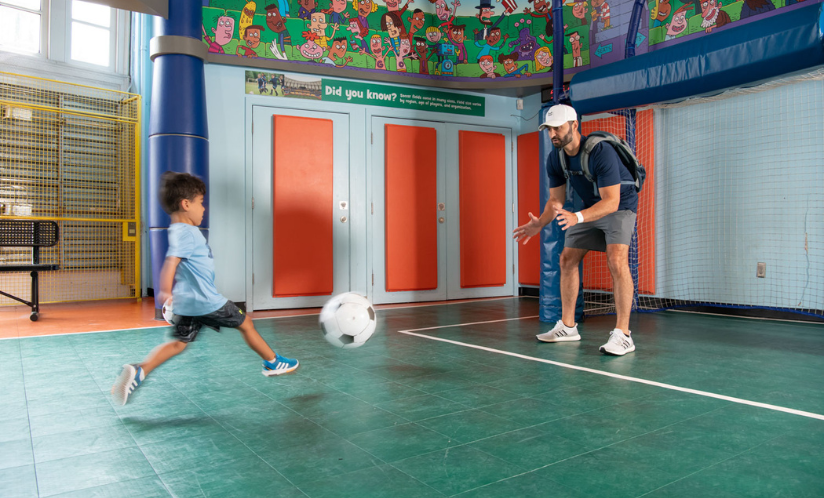
The author of this article, Shelby Hiken, M.Ed, is a Senior Education Specialist at Port Discovery Children’s Museum.
The desire for independence is a journey that begins at birth and continues through childhood. Gaining independence by completing tasks without adult assistance is an important and natural part of growing up. When children find and embrace a sense of independence, it ignites motivation and a desire to persevere.
Kids want to do what adults do, right? Knowing that, how can we ensure our kids are getting the support they need to become confident and self-reliant adults? We need to provide our young children with lots of time, space, and opportunities to practice routine practical skills. We can encourage kids to demonstrate independence and responsibility in many different situations. Here are some ways to promote independence at home:
-
Make it Child-Sized
We can encourage success with child-sized furniture, equipment, and materials. Low desks and tables can create an easy-to-use workspace. Incorporating floor mats and table mats will isolate areas of activity and encourage kids to focus on one exercise at a time. Have you been wondering how to contain all those small manipulatives? Work mats designate a space for loose parts and make the clean-up process an independent and manageable experience.
-
Create a Book Nook
Create a cozy nook for reading books about various topics enriched by regular library visits. Limit the number of books within the nook by assessing what is currently interesting to the children. Keep the books that are enticing and rotate out books that are no longer capturing the children’s enthusiasm. Remember, quality over quantity is essential for inspiring concentration.
-
Materials on the Move
Set up a rolling cart full of art supplies. This is an easy way to maintain organization. In those early years, remember art projects should be focused on process rather than a product. Exposure to different artistic techniques encourages kids to independently find their preferred methods of artistic expression.
-
Reduce, Reuse, Recycle
Reuse it! Create storage containers by decorating gently used cans and jars. Reuse egg cartons as storage or painting pallets. Natural materials are the perfect inspiration for new art projects: nature mandalas, chlorophyll painting, and leaf people. Let the natural world inspire you!
-
Craft with Culinary Arts
Need extra help in the kitchen? A Learning Tower allows kids to stand at counter height so they can participate in culinary endeavors. Use dishes that kids can easily and safely handle when setting the table. Set aside a low, easily accessible, and organized cabinet for kids’ kitchen items. A designated cabinet will allow kids to put away clean dishes after washing them. Small pitchers and cups will give kids the necessary control to successfully pour their own beverages.
Nurturing independence is a critical role among adults who support children. With lots of practice, kids develop the courage and determination to become contributors and agents of change within their families, schools, local communities, and even the world. Together, we can empower young children with independence!